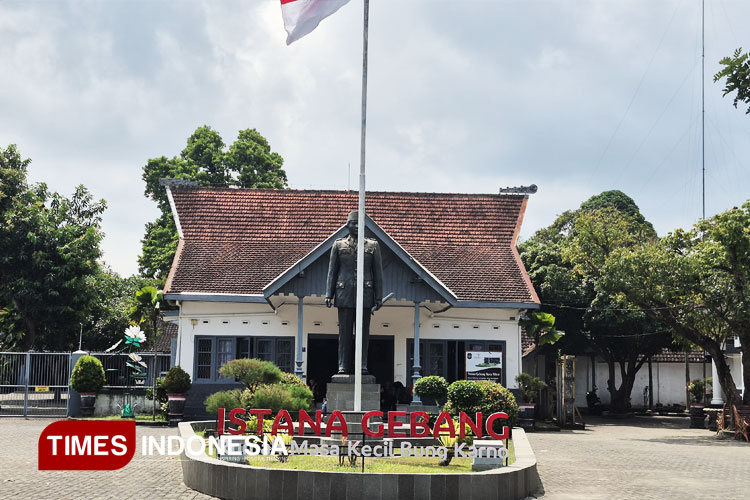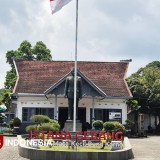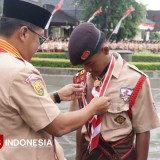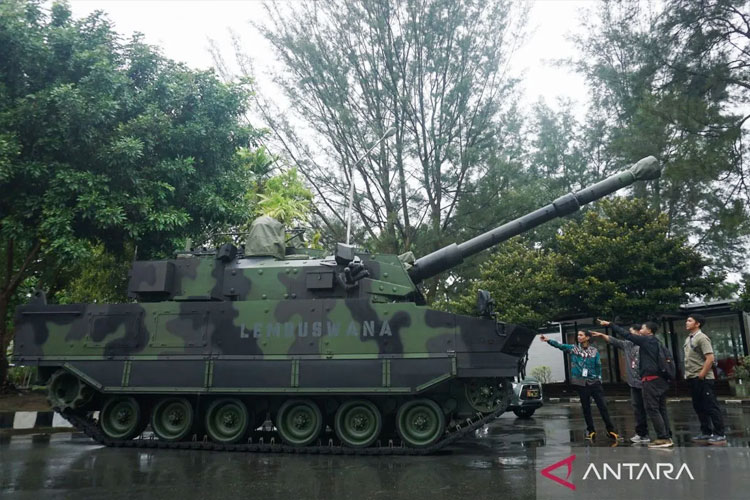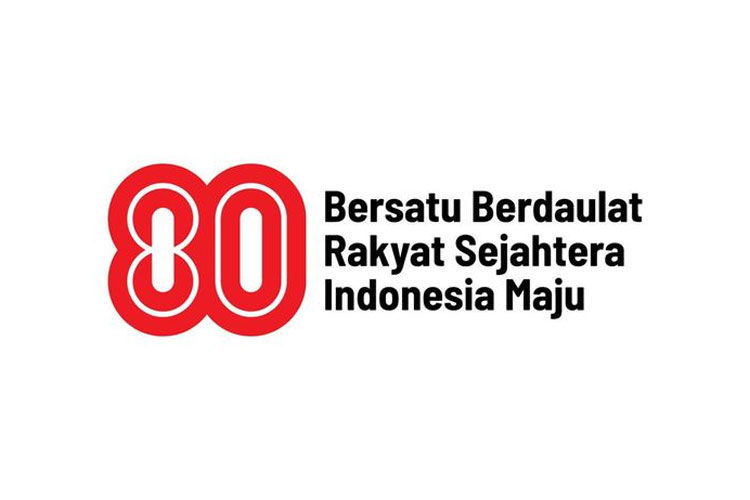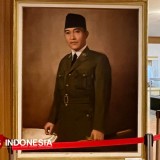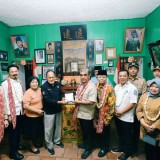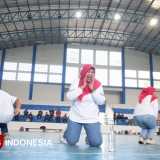TIMES SINGAPORE, BLITAR – Nestled at Jalan Sultan Agung No. 59 in Sananwetan, Blitar, Istana Gebang or Ndalem Gebang which translated into English as Gebang Palace is a beautifully preserved colonial-style residence that spans approximately 1.7 to 1.8 hectares. Built in 1884 alongside the Blitar Railway Station, the house originally belonged to Christian H. Portier, a Dutch railway official.
Its grand architecture and leafy surroundings preserve the atmosphere of a bygone era, while inside, every corner speaks of Indonesia’s journey to independence. This was the home where Sukarno, later the nation’s first president, spent his formative teenage years.
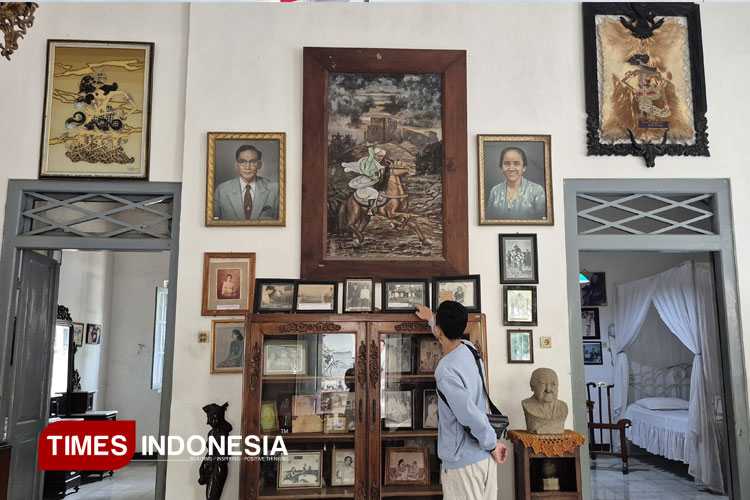 The family living room at Istana Gebang, complete with original furniture and heirlooms from Bung Karno’s family, offers visitors a glimpse into the daily life of Indonesia’s first president during his youth. (Photo: Abimanyu Satrio Widodo/TIMES Indonesia)
The family living room at Istana Gebang, complete with original furniture and heirlooms from Bung Karno’s family, offers visitors a glimpse into the daily life of Indonesia’s first president during his youth. (Photo: Abimanyu Satrio Widodo/TIMES Indonesia)
From 1917 to 1919, Sukarno lived here with his parents, Raden Soekemi Sosrodihardjo and Ida Ayu Nyoman Rai, along with his older sister, Soekarmini Wardoyo. The family moved in when Soekemi was reassigned to Blitar as a school inspector, known then as a mantri guru.
“This house once belonged to a Dutch railway employee. When Bung Karno’s father was transferred to Blitar, his family moved in,” explained Kintan, a tour guide at Istana Gebang. Local historians note that Sukarno’s years in Blitar were pivotal in shaping his nationalistic ideals and political vision.
The Main House
Entering the main house, visitors are greeted by a spacious Javanese-style living room, still furnished with the original chairs, tables, and teakwood cabinets from more than a century ago. Photographs of Sukarno’s youth and paintings donated by artists adorn the walls.
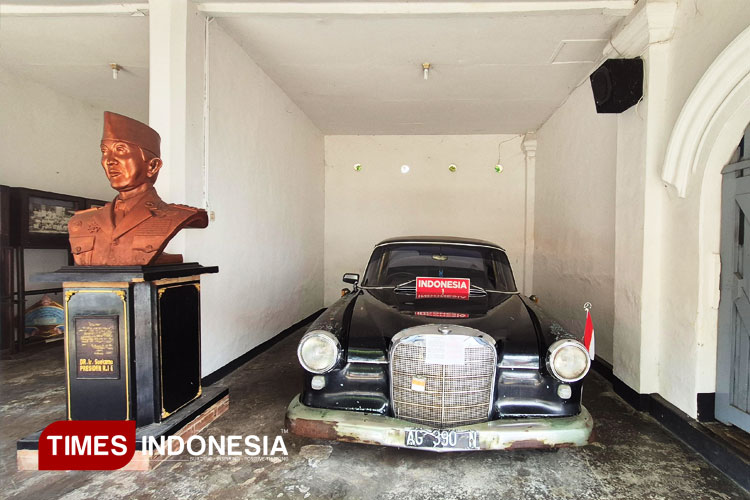 The German-made Mercedes Benz 190 once used by President Sukarno during his 1961 visit to Blitar remains one of the most treasured collections at Istana Gebang. (Photo: Abimanyu Satrio Widodo/TIMES Indonesia)
The German-made Mercedes Benz 190 once used by President Sukarno during his 1961 visit to Blitar remains one of the most treasured collections at Istana Gebang. (Photo: Abimanyu Satrio Widodo/TIMES Indonesia)
The family room features rattan-woven chairs, a desk with a typewriter once belonging to Sukarno’s brother-in-law, Poegoeh Wardoyo, and several bedrooms, including the one Sukarno occupied as a teenager.
“Walking into his bedroom, you can almost feel the presence of the young Bung Karno, full of dreams and determination,” said a local heritage volunteer.
At the back of the house lies a shady sitting area where Sukarno often relaxed and which, according to records, also served as a meeting place for members of PETA (Defenders of the Homeland) under the leadership of Sudanco Supriyadi.
The dining room, traditional kitchen with a wood-burning stove, and original bathroom have been maintained in their original state.
One of the most intriguing features is an old well, which locals believe has never run dry since 1884 and whose water is thought to bring blessings.
“Some visitors wash their faces here, believing it brings good fortune,” Kintan added with a smile. Near this well stands a set of antique gamelan instruments, once used to welcome Sukarno when he returned to Blitar.
The Most Treasured Collection
Among the prized exhibits is a German-made Mercedes Benz 190, the very car used to pick up Sukarno during a 1961 visit. This, along with personal items, family heirlooms, and rare photographs, allows visitors to imagine walking alongside the man known as the Penyambung Lidah Rakyat Indonesia—the mouthpiece of the Indonesian people.
“Istana Gebang is not just a museum; it’s a place where history speaks. It reminds us of Bung Karno’s message to never ever forget history," remarked Tegar Arminto Dewantoro, a visitor from Surabaya.
Istana Gebang Today
On June 7, 2012, Istana Gebang was officially handed over to the Blitar City Government and transformed into a public heritage site.
Today, it serves not only as a museum but also as a venue for commemorative events such as Sukarno’s birthday on June 6, the annual haul memorial, and Pancasila Day celebrations.
For many visitors, Istana Gebang is a living monument that keeps alive the values of Indonesia’s independence struggle.
Easily accessible from Blitar Station and located near the Sukarno Mausoleum, the palace forms part of a historical circuit that takes visitors from Sukarno’s youth to his final resting place.
Together, these sites create a powerful narrative of a leader’s life, from his humble beginnings to his enduring influence on a nation’s destiny. As one local historian put it, “To walk through Istana Gebang (Gebang Palace) is to walk through the very heart of Indonesia’s story,” Tegar ended. (*)
Artikel ini sebelumnya sudah tayang di TIMES Indonesia dengan judul: Gebang Palace: Tracing the Legacy of Sukarno’s Youth
| Writer | : Khodijah Siti |
| Editor | : Khodijah Siti |
